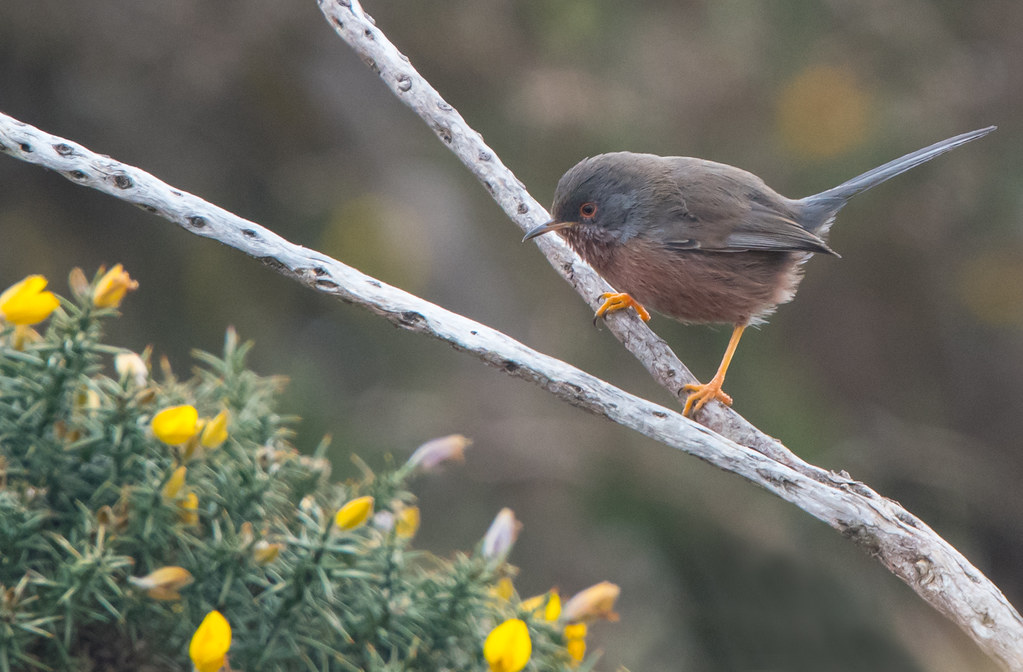
Tim writes: living in the north means I don’t see Dartford Warblers very often. But on the few times I have seen them I’m always surprised by how small they are. The book measurements are deceiving because they have a long tail. So at 12cm bill to tail tip they are 2cm longer than a Wren, but the two species weigh the same at about 10g. This one perched briefly on a Y-shaped dead gorse branch giving me the opportunity to capture the subtle blue and burgundy plumage, and the tiny white spots on the throat, and the day-glo orange legs. This was taken at Aylesbeare Common RSPB reserve in Devon where they are resident breeders.
Dartford Warbler was first discovered when Dr John Latham (1740-1837 Physician and naturalist ) collected a pair on 10th April 1773 at Bexley Heath near Dartford, Kent. Bexley Heath was then a wild heathland but is now Bexleyheath, a town in the suburbs of London. At this time Dartford Warblers had not been seen anywhere else in the world and were thought to be a British endemic, but during the next decade or so, they were found breeding in France, and on other southern heathlands. It was then thought that Dartford Warblers were a winter visitor to Britain but it seemed unusual that a bird breeding in France would fly north for winter. The problem was solved early in the nineteenth century when George Montagu found the first British nest in South Devon.
The scientific name is Sylvia undata. Sylvia refers to woods, though not the habitat of the heathland-loving Dartford Warbler, it is a family (genus) that it shares with woodland-dwelling warblers like Blackcap and Garden Warbler. The name undata means wavy, but there is nothing remotely wavy about its plumage. It was named in 1783 by the Dutch naturalist Pieter Boddaert who used the name to describe the bird’s flight, which is undulating (or wavy). The lightness of the bird and weak flight certainly gives them an undulating flight which I saw for myself as they flew between gorse thickets.
[registration_form]
Excellent as always, Tim; thank you. Fascinating historical background too.
They always seem so alert.
A provincial newspaper in the South referred to it,
presumably by a non-birder, as a Watford Dabbler.